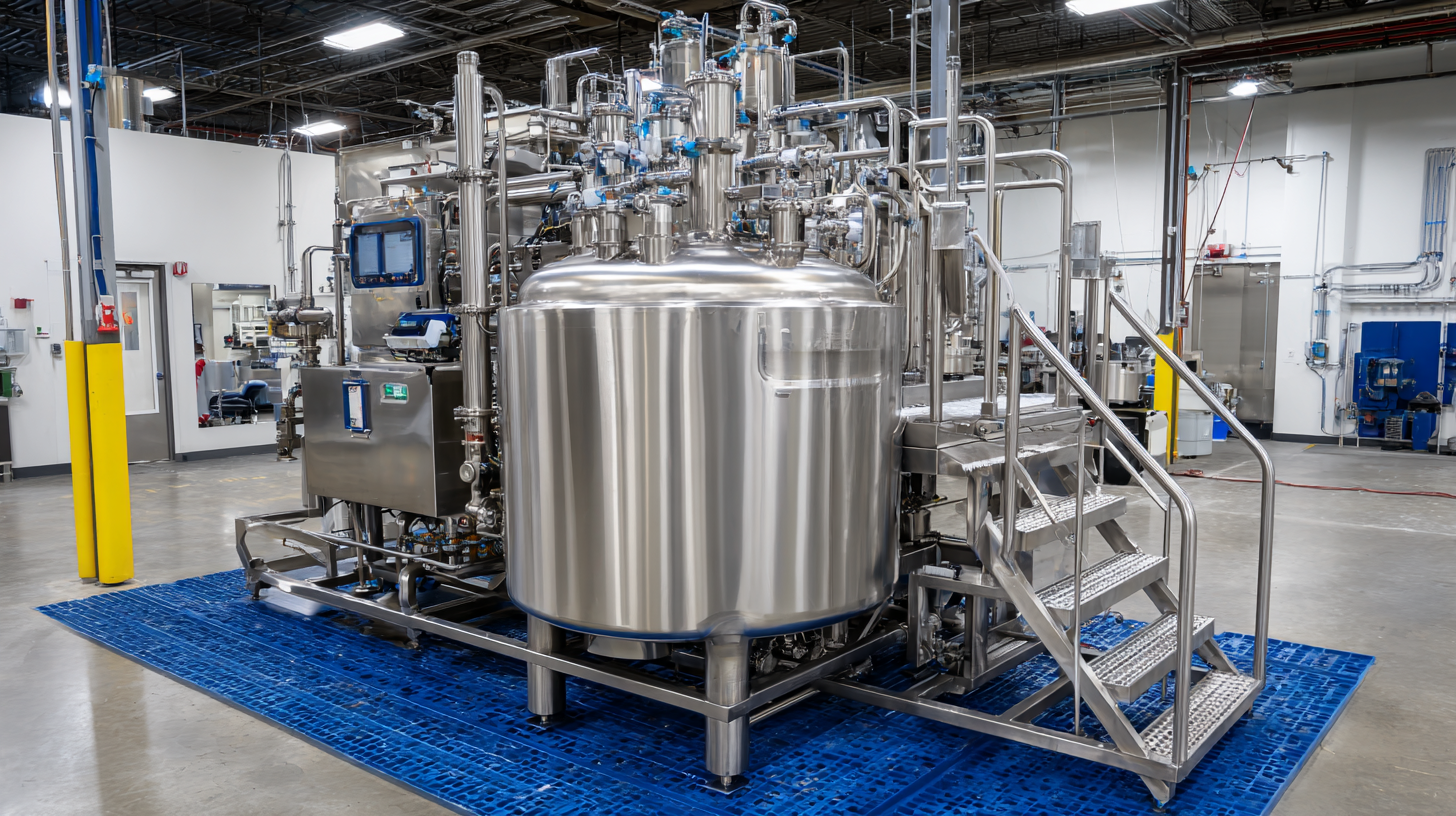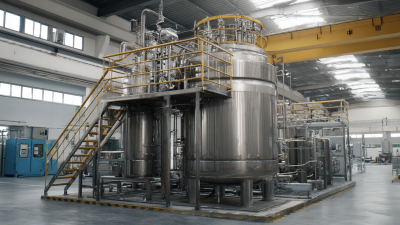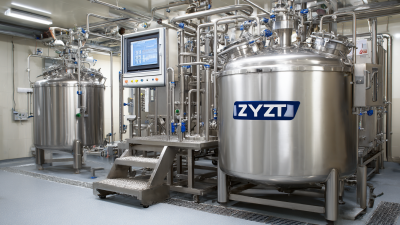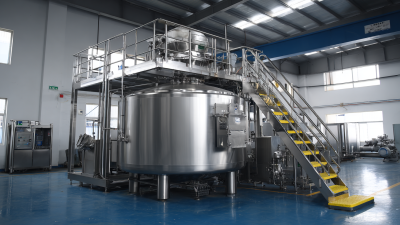
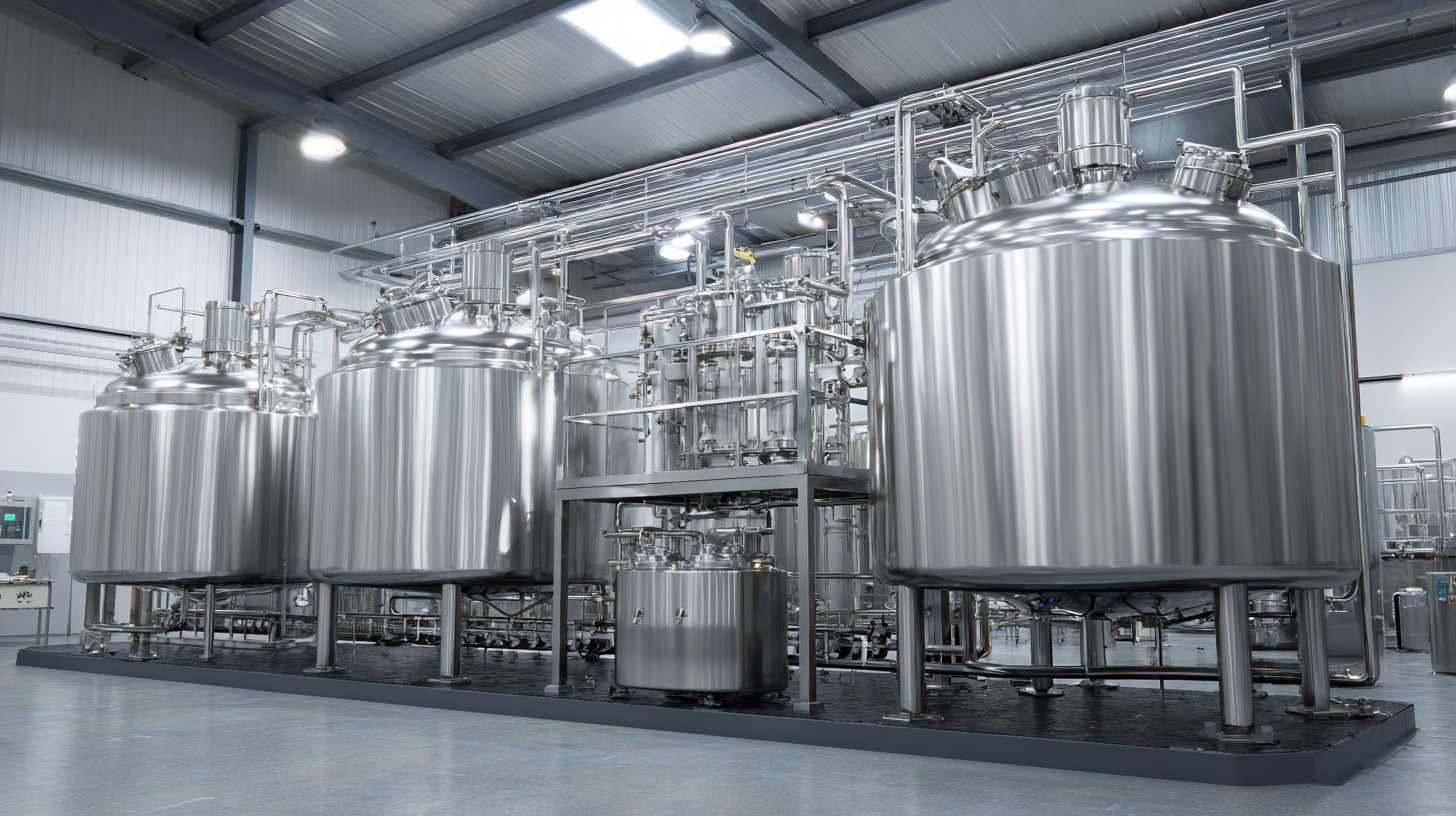 In the ever-evolving landscape of industrial production, the selection of equipment plays a pivotal role in ensuring efficiency and product quality. One such crucial component is the
"Stainless Mixing Tank," which is integral to various sectors, including food and beverage, pharmaceuticals, and chemicals. As reported by
Market Research Future, the global stainless steel tank market is projected to reach
USD 1.09 billion by 2025, driven by increasing demand for hygienic and durable mixing solutions.
In the ever-evolving landscape of industrial production, the selection of equipment plays a pivotal role in ensuring efficiency and product quality. One such crucial component is the
"Stainless Mixing Tank," which is integral to various sectors, including food and beverage, pharmaceuticals, and chemicals. As reported by
Market Research Future, the global stainless steel tank market is projected to reach
USD 1.09 billion by 2025, driven by increasing demand for hygienic and durable mixing solutions.
A Stainless Mixing Tank not only aids in the uniform blending of ingredients but also enhances process safety and compliance with industry regulations. In 2023, a survey conducted by
Food Processing Technology highlighted that 70% of manufacturers prioritize stainless steel due to its corrosion resistance and ability to maintain sanitary conditions.
As we approach 2025, understanding the myriad factors such as
tank capacity, agitator type, and material grade becomes essential for making an informed decision that aligns with specific production needs.
This guide aims to illuminate the key considerations in selecting the optimal stainless mixing tank for your operations.
When selecting the best stainless mixing tank for your production needs in 2025, it’s critical to first understand your specific production requirements. According to industry reports, the demand for stainless steel tanks is expected to grow by 6.2% annually, largely due to their durability and resistance to corrosion, making them ideal for a variety of industries, including food, pharmaceuticals, and chemicals. Assessing factors such as the nature of the materials you are mixing, the volume capacity required, and the specific mixing processes will help you narrow down your options efficiently.
**Tip:** Before purchasing a mixing tank, evaluate the viscosity and thermal properties of the products you will be mixing. Tanks designed for high-viscosity liquids often feature specialized agitators that enhance mixing efficiency.
Additionally, consider the regulatory and sanitary standards relevant to your industry. For instance, food-grade mixing tanks must comply with strict health regulations, which may dictate their design and material specifications. A recent survey indicated that 75% of food manufacturers prioritize compliance with FDA regulations when choosing equipment.
**Tip:** Consult with manufacturers about the certifications and quality control measures in place for their equipment to ensure you meet industry standards.
This chart illustrates the key production requirements for stainless mixing tanks based on industry trends observed in 2025. The data reflects expected capacities and specific features that producers prioritize in their operations.
When selecting the best stainless mixing tank for your production needs in 2025, several key features are crucial for ensuring efficiency and durability. First, assess the tank's material quality; high-grade stainless steel not only enhances longevity but also ensures resistance to corrosion and contamination, vital for maintaining product integrity. Additionally, look for tanks with advanced surface treatments that reduce adhesion and facilitate easier cleaning, which is essential in industries such as food and pharmaceuticals.
Another important aspect to consider is the tank's design and configurability. Features like adjustable baffles and optimized impeller placement can significantly improve mixing efficacy and consistency in your production processes. Furthermore, ensure that the tank includes integrated monitoring systems and automation capabilities, allowing for real-time adjustments and data collection, which are becoming increasingly essential in modern production environments. Emphasizing these features will help you choose a mixing tank that not only meets your immediate needs but also adapts to future production demands.
| Feature | Importance | Recommended Specification |
|---|---|---|
| Material Quality | High corrosion resistance | 316 Stainless Steel |
| Tank Capacity | Meets production volume | 500 - 5000 Liters |
| Agitation System | Uniform mixing | Variable Speed Stirrer |
| Insulation | Temperature control | Dual Layer Insulation |
| Cleaning Features | Ease of maintenance | CIP (Clean-in-Place) System |
| Safety Mechanisms | Operational safety | Pressure Relief Valve |
When selecting the best stainless mixing tank for production needs in 2025, it is essential to evaluate the materials and designs that enhance mixing efficiency. Stainless steel remains a preferred choice due to its durability, resistance to corrosion, and ease of cleaning. Recent advancements in material science, such as innovative stainless steel alloys, are pushing the boundaries of mixing tank design, offering greater resistance to high-temperature and corrosive substances, thereby extending the lifespan of the equipment.
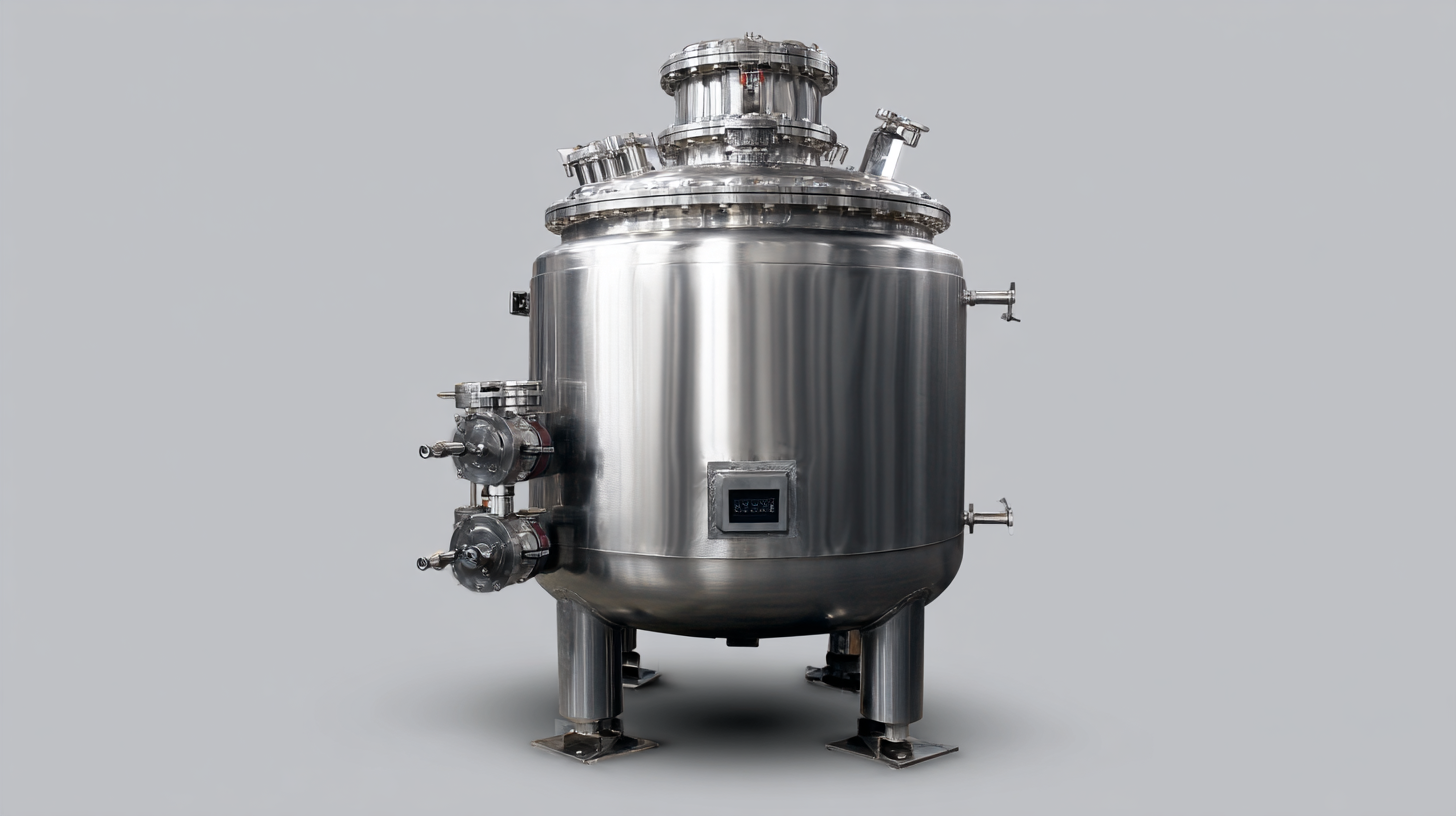
Design considerations are equally critical in ensuring efficient mixing processes. Features such as optimized agitator designs and advanced geometry can significantly improve the mixing performance by enhancing flow dynamics within the tank. Incorporating simulations and empirical testing can guide the selection of the most effective tank configurations, much like the deployment strategies emerging from recent research that aim to balance performance and efficiency in other fields. Ultimately, a well-chosen stainless mixing tank, tailored to specific production requirements, can lead to significant operational efficiencies, aligning closely with sustainability goals and technological advancements seen in sectors like solar energy.
When selecting a stainless mixing tank for your production needs, cost considerations play a crucial role in the decision-making process. It's essential to strike a balance between quality and budget without compromising on the tank's performance capabilities. High-quality stainless steel tanks are known for their durability and resistance to corrosion, which can lead to long-term savings despite a higher initial investment. Evaluating the total cost of ownership, including maintenance and potential replacement costs, can provide better insight into the actual economic impact of your choice.
Moreover, it's vital to consider the specific requirements of your production process when budgeting for a mixing tank. Custom features such as heating elements, insulation, or specialized mixing mechanisms can significantly influence the overall price. While these add-ons may increase upfront costs, they can enhance efficiency and productivity, yielding a higher return on investment over time.
Consulting with industry experts and suppliers can help identify the most cost-effective options tailored to your unique production needs, ensuring that you make an informed decision.
As we look ahead to 2025, the stainless mixing tank industry is poised for significant advancements driven by technology and sustainability. One of the most noteworthy trends is the increasing incorporation of smart technology within mixing tanks. According to a recent report by MarketsandMarkets, the global smart tank market is projected to grow at a CAGR of 17.3% from 2022 to 2027. This growth reflects the industry's shift towards automation, enabling real-time monitoring and data analysis for optimized production processes.
